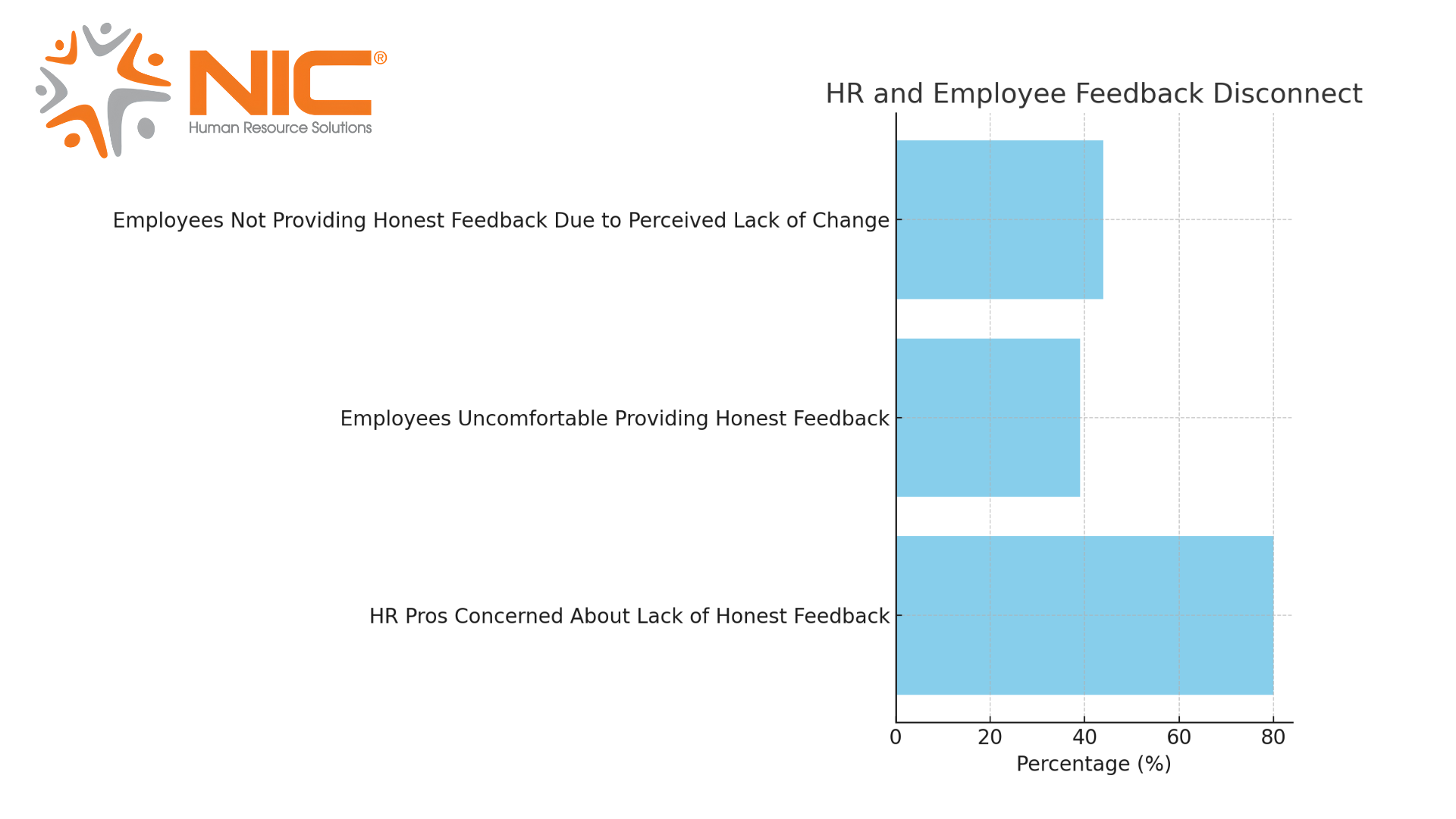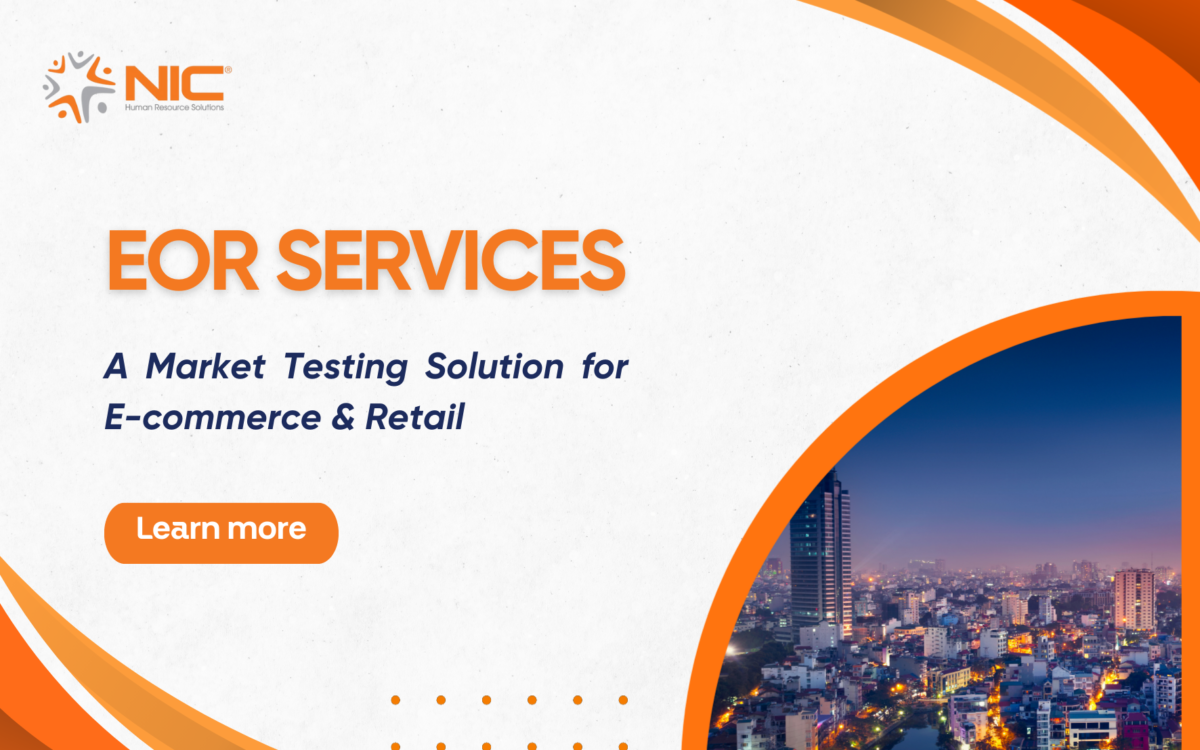HR and Employees Don’t See Eye to Eye on Engagement
19/10/2024
Bridging the Gap for a Stronger Workforce
Human resources (HR) teams play a crucial role in shaping the employee experience, driving engagement, and fostering a productive work environment. Yet, according to a recent SurveyMonkey report, there’s a significant gap between how HR professionals view engagement and how employees actually experience it. This divide has the potential to undermine efforts in talent retention, productivity, and overall workplace satisfaction.
This article explores the key findings of the SurveyMonkey report, identifies the reasons behind the HR-employee disconnect, and suggests actionable steps HR leaders can take to close the gap.

Understanding the Disconnect Between HR and Employees
HR teams are only as effective as their ability to collect and act on authentic employee feedback. However, as the SurveyMonkey report reveals, many companies struggle to achieve this. A disconnect exists between what HR prioritizes and what employees feel is important for engagement. This can vary based on factors such as generation, geography, identity, and parental status, making it difficult for HR teams to create one-size-fits-all strategies.

The report, published on Sept. 3, 2024, surveyed 304 HR professionals and 2,593 U.S. workers about company culture, leadership, and HR’s impact on the workplace. The findings show that HR professionals are largely focused on employee experience—with 53% of HR respondents indicating that their companies are increasing their focus in this area. Yet, the same HR professionals voiced concerns that employees weren’t offering open and honest feedback about their workplace experiences.
The Feedback Gap: Why Employees Stay Silent
A staggering 80% of HR professionals expressed worry that employees aren’t giving open feedback. Yet, from the employee side, 39% of workers said they’re uncomfortable sharing candid feedback with HR. Even more concerning, 44% of workers said they refrain from being honest because they don’t believe their feedback will lead to any real change.
This disconnect is problematic for several reasons:
- Trust and Engagement: If employees don’t trust that their feedback will be valued, they’re less likely to engage with HR initiatives. Over time, this can erode trust between employees and leadership, contributing to higher turnover and lower morale.
- Proactive vs. Reactive HR: While HR professionals often see themselves as proactive, employees are more likely to view them as reactive, or worse, primarily advocates for the company rather than for employees. This perception gap means that HR efforts may be misaligned with what employees actually need or expect.
- Leadership vs. Employee Voice: When asked who has the biggest say in workplace decisions, most workers believed that leadership held the most power. Only 21% of employees felt that their voices were heard in decisions that affect the workplace. HR professionals, on the other hand, believed that employee feedback carried equal or greater weight than leadership opinions—a clear sign that the two groups are not aligned.

Generational and Identity-Based Differences in Engagement
The SurveyMonkey report also highlighted how employee engagement priorities can differ widely based on demographics such as age, gender, and identity. For instance, millennial and Gen Z workers often prioritize personal growth and development opportunities, while baby boomers may value job stability and compensation more highly.
Additionally, workers from diverse backgrounds may experience the workplace differently from their peers. Identity, race, and parental status all play roles in how comfortable an employee feels sharing feedback. If HR teams fail to account for these variances, they risk creating engagement strategies that don’t resonate with large sections of their workforce.
The Impact of Feedback on HR’s Effectiveness
The effectiveness of HR is deeply tied to a company’s willingness to foster an environment of open communication and advocacy. According to the report, employees are three times more likely to say HR is effective in companies that support authentic feedback compared to those that don’t. This finding reinforces the importance of creating a culture where employees feel safe and valued when sharing their thoughts.
HR professionals, however, face considerable challenges in this area. In many cases, they are blamed for issues beyond their control. The report found that 70% of HR professionals said they were held accountable for problems they didn’t have the power to fix. This disconnect can further undermine HR’s efforts to build trust and engagement with the workforce.

What Can HR Do to Bridge the Gap?
So, how can HR professionals bridge the gap between their priorities and employees’ needs? Here are several strategies that HR teams can adopt to improve employee engagement and build a culture of trust:
1. Create a Feedback Loop That Drives Action
One of the most significant issues highlighted by the SurveyMonkey report is the perception that feedback doesn’t lead to meaningful change. HR teams should establish a clear feedback loop that shows employees their input is being considered and acted upon.
- Transparent Communication: After collecting feedback, HR should communicate what has been learned and outline specific actions the company is taking as a result. This transparency builds trust and shows employees that their voices matter.
- Quick Wins: Identify areas where immediate action can be taken based on employee feedback. Small, visible changes can demonstrate that the company is committed to making improvements.
- Follow-Up Surveys: Implement regular follow-up surveys to track progress on the issues employees have raised. This will help ensure that improvements are ongoing, rather than one-time actions.
2. Tailor Engagement Strategies to Employee Needs
Since employees’ engagement priorities vary widely based on their demographics, HR teams should move away from one-size-fits-all approaches. Instead, they should create customized engagement strategies that consider factors like generation, identity, and parental status.
- Segmented Feedback: Use segmented feedback to understand the specific needs and concerns of different employee groups. For example, millennial employees may want more opportunities for career development, while parents may prioritize flexible working hours.
- Inclusive Leadership: Make sure leadership is trained to recognize and respect the diverse needs of their workforce. Inclusive leadership training can help leaders understand the unique challenges faced by different demographic groups and ensure that all voices are heard.
3. Build a Culture of Psychological Safety
Employees are more likely to share open and honest feedback when they feel safe and supported. Building a culture of psychological safety should be a top priority for HR teams.
- Anonymous Feedback Options: One way to encourage honesty is by offering anonymous feedback channels, such as surveys or suggestion boxes. This can help employees feel more comfortable sharing their thoughts without fear of retaliation.
- Training for Managers: HR should also invest in training managers to be more receptive to feedback and to create environments where employees feel safe expressing their concerns. Managers play a key role in shaping the day-to-day employee experience, and their attitudes toward feedback can have a significant impact on engagement.
4. Strengthen HR’s Role as an Employee Advocate
Employees often view HR as representing the interests of the company rather than their own. To change this perception, HR teams should position themselves as advocates for the workforce.
- Employee-Centric Policies: HR should work closely with leadership to develop policies that prioritize employee well-being. This could include initiatives such as mental health support, flexible working arrangements, and career development programs.
- Open-Door Policies: HR teams should establish open-door policies that encourage employees to voice their concerns directly. Having a clear and accessible way for employees to share feedback can help foster a sense of trust and empowerment.
The Road Ahead: Fostering a Feedback-Driven Culture
The SurveyMonkey report is a stark reminder that while HR teams are dedicated to improving the employee experience, there’s still a long way to go in terms of aligning with employee expectations. The gaps in feedback, trust, and perceived advocacy need to be addressed for companies to build a truly engaged and productive workforce.
For NIC Global, fostering a culture of open communication and advocacy is at the core of our HR solutions. We believe that building trust, listening to employee concerns, and taking action are the keys to driving engagement. Our team is committed to helping businesses not only collect feedback but also act on it; ensuring that both HR professionals and employees are working toward the same goals.
By focusing on authentic feedback, tailored engagement strategies, and psychological safety, HR teams can close the gap and create workplaces where employees feel heard, valued, and empowered.
In Conclusion: Aligning HR and Employee Priorities
As the SurveyMonkey report has shown, there’s a significant disconnect between what HR teams believe is important for engagement and what employees truly value. To bridge this gap, HR must prioritize transparency, inclusivity, and employee advocacy. By doing so, HR professionals can foster a culture of trust, where employees feel confident that their feedback will lead to meaningful change.
At NIC Global, we’re here to help organizations navigate these challenges and build stronger, more engaged teams. Whether you’re looking to implement feedback-driven solutions or revamp your HR strategies, we’re committed to supporting your journey toward a more aligned and productive workforce.
For contact and support:
Facebook: NIC Global – Human Resource Solutions
Linkedin: NIC Global Sourcing JSC
Website: www.nicvn.com
Email: info@nicvn.com
Hotline: 0981.23.43.76
Address:
- Hanoi Office: No. 3A Thi Sach, Pham Dinh Ho Ward, Hai Ba Trung District, Hanoi, Vietnam
- Ho Chi Minh City Office: Dakao Center Building, 35 Mac Dinh Chi, District 1, Ho Chi Minh City, Vietnam
See more:
Payroll service
Staffing service
EOR service





